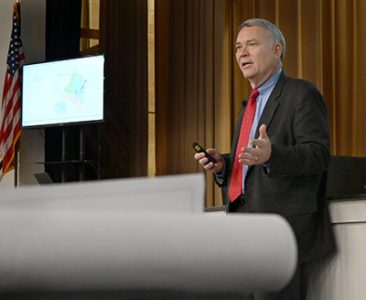Politics
Council will face challenge to keep 3 minority districts

Uneven growth in Georgetown County will make it hard to redraw council district lines that maintain three with Black majorities, according to the head of the state agency that is doing the work.
“Georgetown County is going to be one of the more difficult cases to redistrict because of the population growth and change in dynamic,” said Frank Rainwater, director of the state Office of Revenue and Fiscal Affairs, which is helping the county with the process.
The council has had three of its seven districts with majority Black populations since it adopted single-member districts in the 1980s. Growth in the county has been primarily from white people moving in, and the Black population in the 2020 census was 29 percent, or two-sevenths of the total.
Members of the local chapter of the NAACP told council this week that they have already drafted a redistricting plan that keeps three majority-minority districts. Council members said they haven’t seen a copy and Marvin Neal, the chapter president, said he wasn’t authorized to share it with the press.
But Neal said the plan will keep the Black population in three districts around 51 percent.
Rainwater told council members at a workshop this week that the federal courts have said that the share of minority voters needed to have the opportunity to elect one of their own candidates is “somewhere in the 50 percent range.”
“If you go beyond 60 percent, they’re going to think you’re putting too many minorities in that district and you’re diluting that district,” Rainwater added.
Governments are required to adjust election districts every 10 years following the U.S. Census to maintain the constitution requirement of one-person, one-vote. The three council districts that cover the Waccamaw Neck have grown since the current district lines were adopted in 2011. The four districts in the western part of the county have lost population.
“You do have a challenge. The Black population’s declining. I can say this, if this continues, in 10 years it will be even more of a challenge when we get to 2030,” Rainwater said.
The council adopted a resolution to follow “traditional redistricting principles,” which include districts that are contiguous, as compact as possible, follow existing districts and communities of interest as closely as feasible and are created with public input.
The resolution is important, Rainwater said, because if the council’s redistricting plan is challenged in court it will want a record of how it created that plan.
“They’re not very fond of coming up with a reason after the fact,” he said.
Since the current districts were created, the U.S. Supreme Court struck down a requirement that redistricting in several states with a history of racial discrimination receive prior approval from the U.S. Department of Justice, a process known as preclearance.
“That’s good in the way that the county is more in control of what they do,” Rainwater said. “It’s a little negative in the way that, if you had Justice Department approval and somebody wanted to sue you, you could always say the Department of Justice precleared it.”
The county now has a little more risk, but Rainwater noted, “the burden is on the plaintiff to show you did something wrong. It’s not just that they can draw a better plan or something they like.”
The council resolution also sets a target of 5 percent as the deviation between districts. The current deviation is over 36 percent, with District 6, represented by Steve Goggans, having 20.5 percent more people than the ideal (9,058) and District 4, represented by Lillie Jean Johnson, having 15.9 percent fewer people.
Some jurisdictions set a closer range, Rainwater said, but 10 percent is the limit.
“If you’re too stringent, you’ve basically made it impossible to draw a plan,” he said.
Georgetown County has to move about 4,500 voters. The Waccamaw Neck, where the districts are 81 to 93 percent white, will end up with three complete districts.
District 2, represented by Bob Anderson, will give up voters who are west of the Waccamaw River. They are mostly white.
That should still make it possible to have three majority-minority districts in the western part of the county NAACP members said.
“We must have fair maps,” said Joan Dore of Pawleys Island, a member of the group’s executive committee. “I think they’re very fair to everyone who’s on the council.”
Revenue and Fiscal Affairs will create a sample map based on the council’s input and provide access to mapping software the members can use to tweak district lines.
“There are all these factors, and you have to start considering and weighing what’s more important,” Rainwater said.




